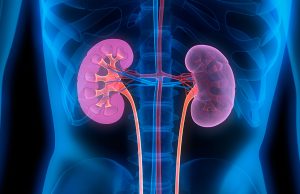 The abuse of prescription painkillers and narcotics has grown into a bonafide public health crisis, affecting virtually every state, city and small town in the United States.[1] Nearly half of the roughly 40,000 drug overdose deaths in 2010 involved pain medications, such as hydrocodone and oxycodone.[2] Approximately 2.1 million people are dependent upon or abusing opioid pain medications.[3] Even older Americans are at risk, with one in four adults 50 years of age and over using psychoactive medications—mostly opioids and benzodiazepines.[4]
The abuse of prescription painkillers and narcotics has grown into a bonafide public health crisis, affecting virtually every state, city and small town in the United States.[1] Nearly half of the roughly 40,000 drug overdose deaths in 2010 involved pain medications, such as hydrocodone and oxycodone.[2] Approximately 2.1 million people are dependent upon or abusing opioid pain medications.[3] Even older Americans are at risk, with one in four adults 50 years of age and over using psychoactive medications—mostly opioids and benzodiazepines.[4]
We at Quest Diagnostics have learned through our conversations with healthcare providers that patients often fail to report their non-medical uses of drugs or of non-compliance with prescriptions to their physicians. Prescription drug misuse falls into every age range, among both men and women, and across socioeconomic strata. Because misuse is difficult to predict or detect,many healthcare providers are hesitant to prescribe pain medications even when indicated.
Quest Diagnostics Health Trends is a series of reports produced by Quest Diagnostics based on our database of de-identified laboratory testing data across the U.S. In 2012, we issued our first Quest Diagnostics Health Trends Report on prescription drug misuse, “Prescription Drug Misuse in America: Laboratory Insights into the New Drug Epidemic”[5] and in 2013 we issued “Prescription Drug Misuse in America: A Report on Marijuana and Prescription Drugs.”[6] The current report is based on patients tested using the Quest Diagnostics prescription drug monitoring service. This service tests for commonly prescribed drugs, including pain medications, central nervous system medications, and certain illicit drugs such as marijuana, cocaine,and heroin.
Our 2014 report builds on our prior research and confirms the high rates of inconsistent test results among those prescribed pain medications and it spans all ages and both genders. This report also provides additional insights into the value of co-testing for heroin metabolites, 6-monoacetylmorphine andmorphine, and the importance of specimen validity testing. Together, these reports reflect analysis of 1,409,037 patient test results for the years 2011–2013. Urine specimens are screened by immunoassay-based methods and all positive results are confirmed by mass spectrometry, the most sensitive and specific drug testing method. The company’s Quest Diagnostics Health Trends studies are performed in compliance with applicable privacy regulations, the company’s strict privacy policies, and as approved by the Western Institutional Review Board.
Read the full study here




















We at Quest Diagnostics have learned through our conversations with healthcare providers that patients often fail to report their non-medical uses of drugs or of non-compliance with prescriptions to their physicians. Prescription drug misuse falls into every age range, among both men and women, and across socioeconomic strata. Because misuse is difficult to predict or detect,many healthcare providers are hesitant to prescribe pain medications even when indicated.
Quest Diagnostics Health Trends is a series of reports produced by Quest Diagnostics based on our database of de-identified laboratory testing data across the U.S. In 2012, we issued our first Quest Diagnostics Health Trends Report on prescription drug misuse, “Prescription Drug Misuse in America: Laboratory Insights into the New Drug Epidemic”[5] and in 2013 we issued “Prescription Drug Misuse in America: A Report on Marijuana and Prescription Drugs.”[6] The current report is based on patients tested using the Quest Diagnostics prescription drug monitoring service. This service tests for commonly prescribed drugs, including pain medications, central nervous system medications, and certain illicit drugs such as marijuana, cocaine,and heroin.
Our 2014 report builds on our prior research and confirms the high rates of inconsistent test results among those prescribed pain medications and it spans all ages and both genders. This report also provides additional insights into the value of co-testing for heroin metabolites, 6-monoacetylmorphine andmorphine, and the importance of specimen validity testing. Together, these reports reflect analysis of 1,409,037 patient test results for the years 2011–2013. Urine specimens are screened by immunoassay-based methods and all positive results are confirmed by mass spectrometry, the most sensitive and specific drug testing method. The company’s Quest Diagnostics Health Trends studies are performed in compliance with applicable privacy regulations, the company’s strict privacy policies, and as approved by the Western Institutional Review Board.
Read the full study here